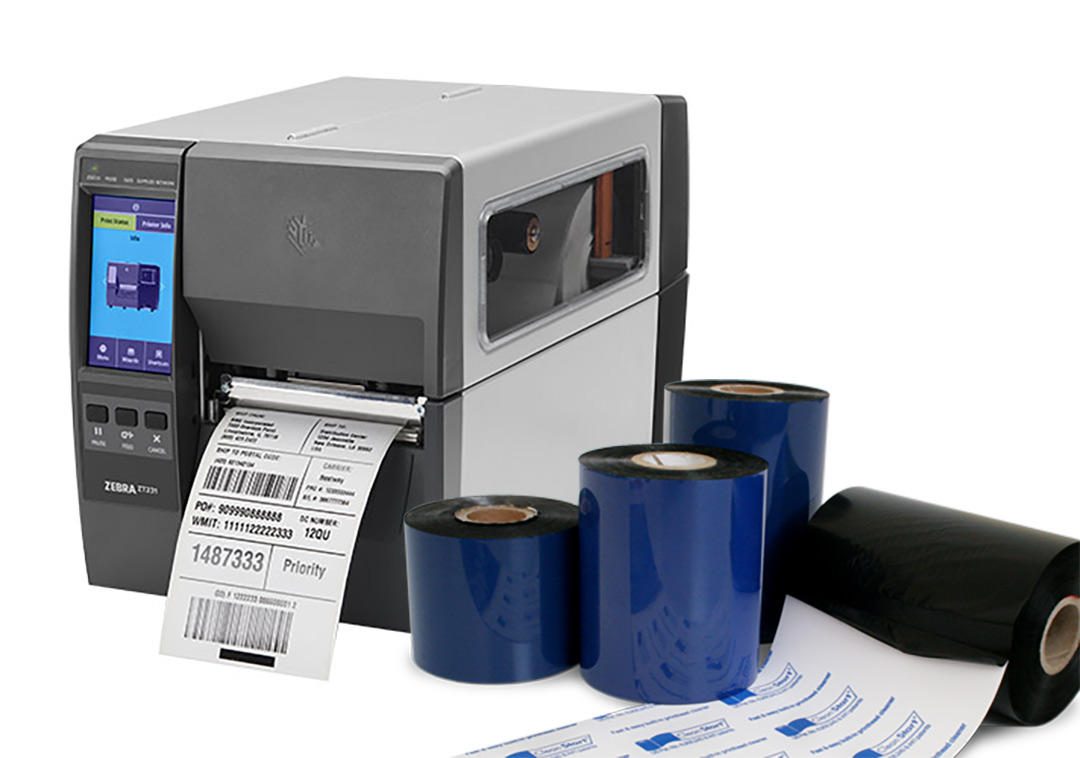Blog
What Is a Thermal Barcode Label? A Complete B2B Guide
Modern supply chains require a critical tool to manage product traceability and inventory control effectively which is the thermal barcode label. Thermal barcode labels serve as critical yet unrecognized support systems for logistics, retail, healthcare, and manufacturing sectors by enabling seamless operations through quick scannable data encoding.
Distributors, wholesalers, and procurement managers need to fully understand thermal barcode labels because it is essential for their operations. Label selection directly affects operational efficiency while determining print durability and influencing long-term expenses.
This comprehensive guide explains thermal barcode labels including their functionality, types, industrial applications and materials while providing best practices for sourcing and usage.
What Is a Thermal Barcode Label?
Definition
Thermal barcode labels represent labels generated through thermal printing technology which contain readable barcodes for identification and tracking purposes. The common applications of these labels include tracking inventory, shipping goods, tagging retail items, and meeting compliance requirements.
How It Works
Printing thermal barcode labels happens through two distinct techniques.
- Direct Thermal printing technology operates by using heat-sensitive paper that turns black when heated by a print head while eliminating the need for ink ribbons.
- Thermal Transfer (TT) printing needs a ribbon that melts to adhere to the label surface resulting in a robust and permanent print.
Thermal barcode labels play a critical role in Business-to-Business operations.
Speed and Accuracy
Thermal printers are fast and reliable. Distribution centers require fast and accurate label creation because slow or incorrect labeling leads to operation delays.
Cost Efficiency
Thermal printing methods save money because they do not require ink and toner. Direct thermal labels provide excellent cost savings for applications that only need to last for a short time.
Application Versatility
These labels are used in:
- Warehouse & Logistics
- Shipping and Fulfillment
- Healthcare and Lab Management
- Retail Price Tagging
- Manufacturing Asset Tracking
Direct Thermal vs. Thermal Transfer Labels
Direct Thermal (DT)
- Pros: No ribbon, low-cost, simple operation
- The direct thermal labels lose their quality with time and cannot withstand heat or UV exposure.
- Ideal for temporary applications such as shipping labels and food packaging
Thermal Transfer (TT)
- Thermal Transfer labels offer extended durability and protection against scratches and heat while performing excellently in demanding conditions.
- Cons: Requires ribbons, slightly higher cost
- Thermal Transfer labels excel at providing long-lasting outdoor labels for medical/lab applications.
Common Use Cases Across Industries
Warehousing and Logistics
- Pallet labels
- Rack identification
- Bin tracking
Retail
- Product pricing labels
- Inventory barcodes
- Promotional labeling
Healthcare
- Lab specimen labels
- Patient wristbands
- Medication tracking
Manufacturing
- Work-in-progress tracking
- Serial number labeling
- Compliance tags (e.g., UL, RoHS)
Label Construction: Key Components
- Facestock – Paper or synthetic surface printed on
- Adhesive – Permanent, removable, or freezer-grade glue
- Liner serves as backing paper which both safeguards the adhesive and maintains the label’s shape.
Choosing the Right Thermal Barcode Label
Application Surface
- Paperboard boxes require general-purpose adhesive
- Metal or plastic surfaces need more robust tack adhesives.
Environment
- Specialty adhesives and materials must be used in freezer environments or areas with high temperatures
- Outdoor labels must use UV-resistant facestock and TT printing methods to maintain functionality.
Print Volume
- Labels used on high-speed production lines require tear-resistant materials and flat release liners.
Label Shape and Size
- The capability to scan barcodes depends on both their length and their clarity.
- Tailored label dimensions enable precise accommodation of packaging and product shapes.
Materials Used in Thermal Barcode Labels
Paper-Based Labels
- Cost-effective
- Suitable for general-purpose labeling
- Compatible with both DT and TT
Synthetic Labels
- BOPP: Moisture-resistant and durable
- PET: High strength and chemical-resistant
- PE: Flexible and used on squeezable packaging
Adhesive Options
- Permanent adhesive for standard use
- Removable adhesive for retail or returnable bins
- Freezer adhesive for refrigerated logistics

Printer Compatibility and Ribbon Pairing
For Thermal Transfer
- Choose ribbon type based on material:
- Wax: For paper labels
- Wax/Resin: For semi-gloss and synthetic labels
- Resin: For extreme conditions (heat, chemicals)
Printer Settings
- Calibrate heat and speed settings
- Use correct DPI resolution for barcode clarity
Barcode Standards and Scannability Tips
- Supply chain partners should receive barcodes with a minimum quality of Grade A or B.
- Maintain quiet zones around barcodes
- Test readability under varied lighting conditions
Sample Request and Testing
Before large-scale orders, always:
- Request samples
- Test under real-life application conditions
- Check how accurately scanners read labels while also assessing their resistance to ink smudges and their long-lasting durability.
Benefits for Distributors and Wholesalers
- End users submit fewer complaints when label quality remains consistent throughout.
- Broad compatibility across client industries
- The adoption of standard sizing and specifications leads to faster procurement cycles.
Buying in Bulk: Cost-Saving Tips
- Use jumbo rolls to reduce changeovers
- Standardize label sizes across SKUs
- Combine ribbon orders to achieve savings in both shipping expenses and testing requirements.
- Ask for volume-based discounts
Thermal Label Compliance Considerations
Ensure that thermal barcode labels meet:
- RoHS compliance for manufacturing
- Food and pharmaceutical products need to follow FDA labeling standards when thermal barcode labels are utilized.
- CE or UL approval if required
Conclusion
Modern businesses rely heavily on thermal barcode labels for warehouse management as well as retail and healthcare functions. The ability to distinguish between direct thermal and thermal transfer technologies alongside selecting appropriate label materials and adhesives and accounting for environmental factors results in enhanced label performance and reduced operational expenses.
Business-to-business buyers and distributors achieve product consistency and improved compliance along with a streamlined supply chain when they partner with dependable thermal label suppliers.
Frequently Asked Questions (FAQ)
What’s the difference between direct thermal and thermal transfer barcode labels?
Direct thermal uses heat-sensitive paper without a ribbon, while thermal transfer uses a ribbon for more durable and long-lasting prints.
Are thermal barcode labels waterproof?
Only thermal transfer labels with synthetic materials like BOPP or PET are waterproof.
How long do direct thermal barcode labels last?
Typically 6–12 months, depending on storage conditions. Not recommended for long-term or outdoor use.
Can I print thermal barcode labels with any printer?
You need a compatible thermal printer—either direct thermal or thermal transfer. Make sure the label matches your printer type.
Can I get custom sizes and shapes?
Yes. Thermal barcode labels can be die-cut into custom sizes and shapes to fit your packaging or product needs.
Looking for a Reliable Thermal Barcode Label Supplier?
Contact us today to request samples or bulk pricing on high-quality thermal barcode labels.
📧 Email: sales@foyottr.com
📞 Tel: +86-592-6018318
🌐 Website: https://foyottr.com

